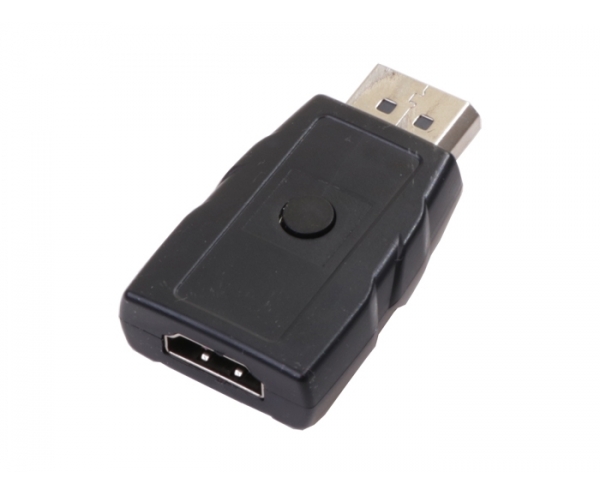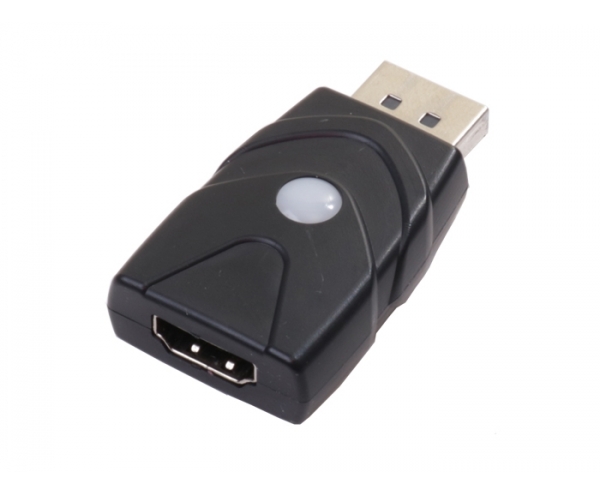《 Introduction 》
The DisplayPort to HDMI EDID Emulator copies the EDID of the desired HDMI display and connects directly to the DisplayPort sourceto ensure that the EDID is not lost in connections between devices such as splitters, switchers and extenders.
《 Features 》
1. Uni-directional adapter that allows you to connect your DisplayPort source device to a HDMI display.
2. Support DisplayPort 1.2 and 4 lanes
3. Compliant with DisplayPort 1.2a, data rate up to 21.6 Gbps ( 5.4 Gbps per lane ).
4. Compliant with HDMI 2.0, data rate up to 18 Gbps ( 6 Gbps per lane ).
5. Compliant with HDCP 1.4 & 2.2.
6. Supports resolutions up to 4Kx2K@60Hz / 1080p@240Hz YCbCr 4:4:4.
7. Supports 3D function.
8. Supports headless operation no monitor connection required.
9. Pre-programmed with many standard resolutions with native set to 1080p.
The selectable resolutions are dependent on the computer's graphic card. < Internal EDID>
10. Support EDID COPY function ( copy EDID from the connecting display and always save the latest EDID ). < External EDID>
11. One click to switch using Internal EDID or External EDID.
12. LED indicator provide signal status information.
13. Compact size for easy installation.
14. Supports Plug-n-Play. No driver, software required.
15. No external power supply required, powered by DisplayPort source device.
16. Ideal for resolving signal handshaking problems between a source and a display.
《 Diagram 》
.jpg)
Example for use with extender:

《 Specification 》
|
DisplayPort 1.2 to HDMI 2.0 EDID Emulator |
|
|
Model No. |
DPH-EWB |
|
Description |
DisplayPort 1.2 to HDMI 2.0 EDID Emulator |
|
Input Interface |
DisplayPort ( Male ) |
|
Output Interface |
HDMI Type A ( Female ) |
|
Resolution ( Max. ) |
4Kx2K@60Hz / 1080p@240Hz |
|
Operating Temperature / Humidity |
0 to 40°C / 20% to 80% RH ( Non-condensing ) |
|
Storage Temperature / Humidity |
-20 to 60°C / up to 95% RH ( Non-condensing ) |
|
Dimensions |
52x28x12 mm |
|
Power Supply |
via DisplayPort source device |





